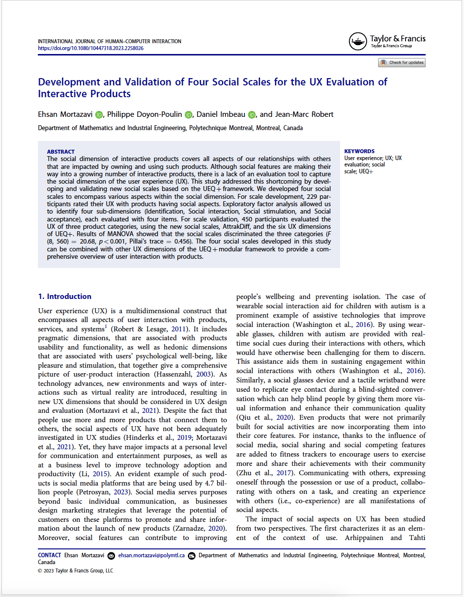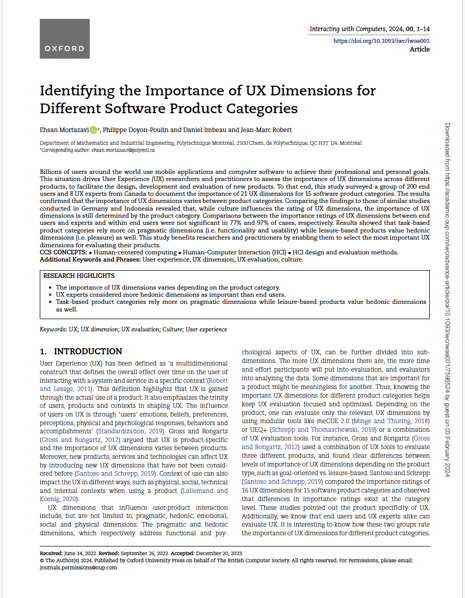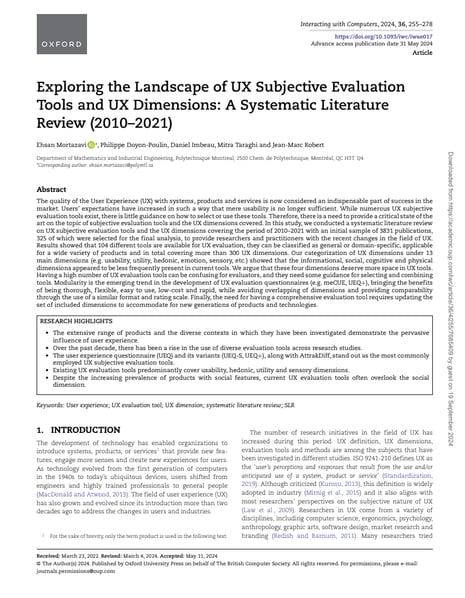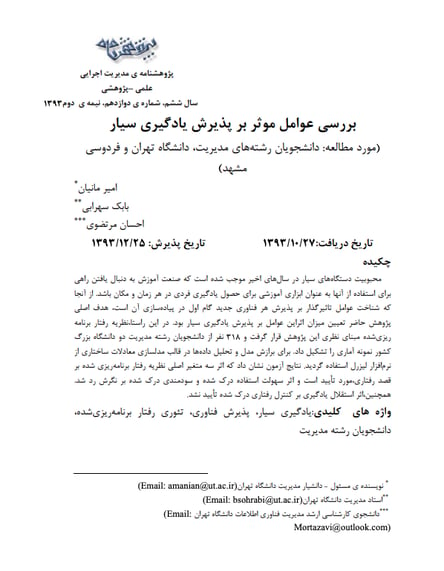
Development and Validation of Four Social Scales for the UX Evaluation of Interactive Products
Journal: International Journal of Human-Computer Interaction
Authors: Ehsan Mortazavi, Philippe Doyon-Poulin, Daniel Imbeau, Jean-Marc Robert
The social dimension of interactive products covers all aspects of our relationships with others that are impacted by owning and using such products. Although social features are making their way into a growing number of interactive products, there is a lack of an evaluation tool to capture the social dimension of the user experience (UX). This study addressed this shortcoming by developing and validating new social scales based on the UEQ + framework. We developed four social scales to encompass various aspects within the social dimension. For scale development, 229 participants rated their UX with products having social aspects. Exploratory factor analysis allowed us to identify four sub-dimensions (Identification, Social interaction, Social stimulation, and Social acceptance), each evaluated with four items. For scale validation, 450 participants evaluated the UX of three product categories, using the new social scales, AttrakDiff, and the six UX dimensions of UEQ+. Results of MANOVA showed that the social scales discriminated the three categories (F (8, 560) = 20.68, p < 0.001, Pillai’s trace = 0.456). The four social scales developed in this study can be combined with other UX dimensions of the UEQ + modular framework to provide a comprehensive overview of user interaction with products.
Abstract:
Publications








